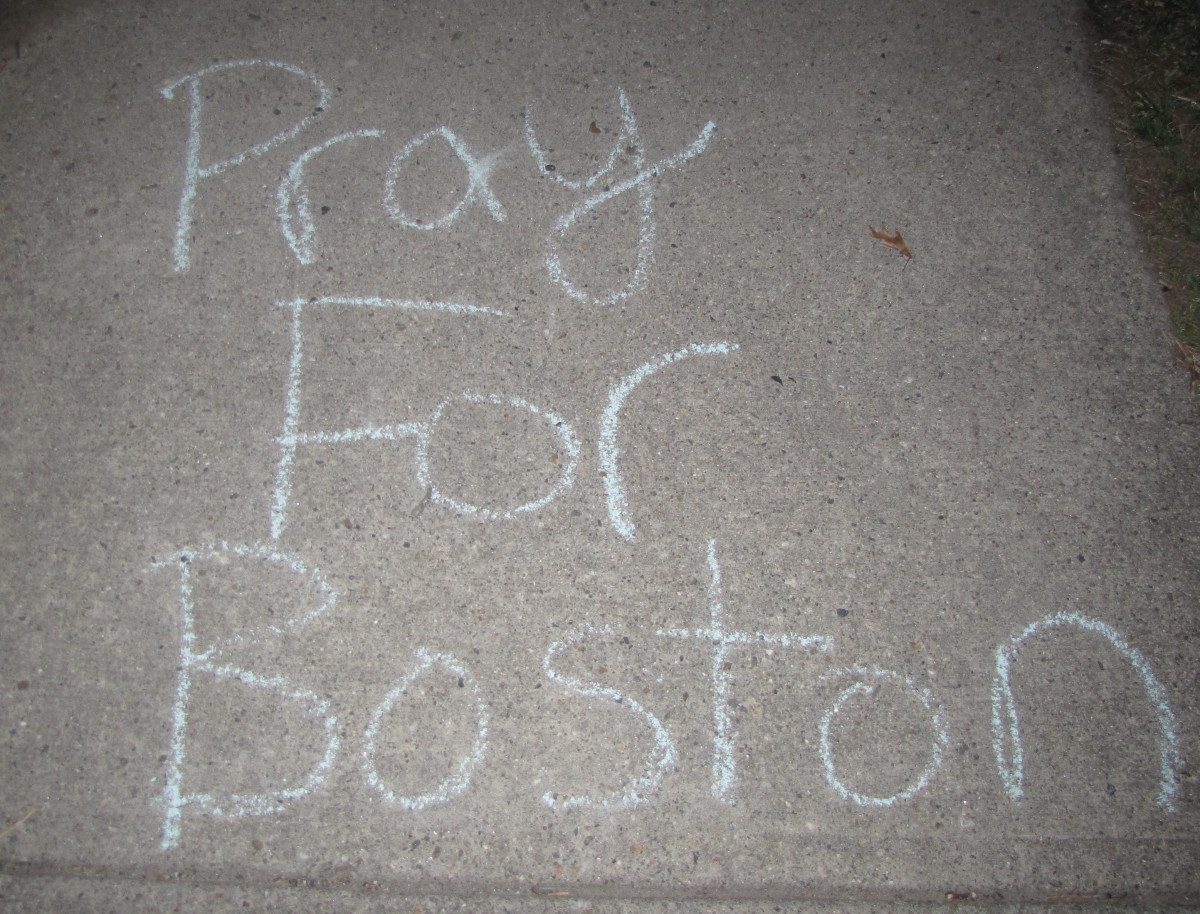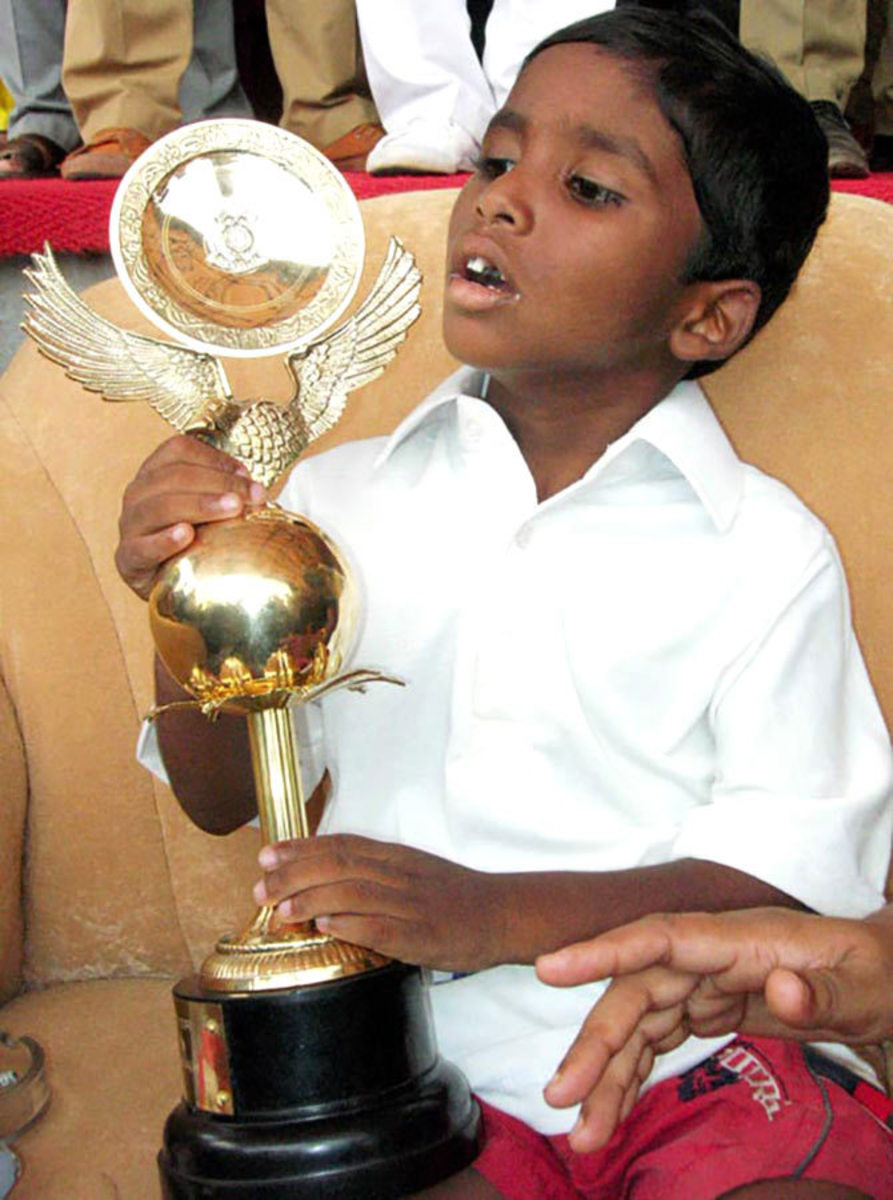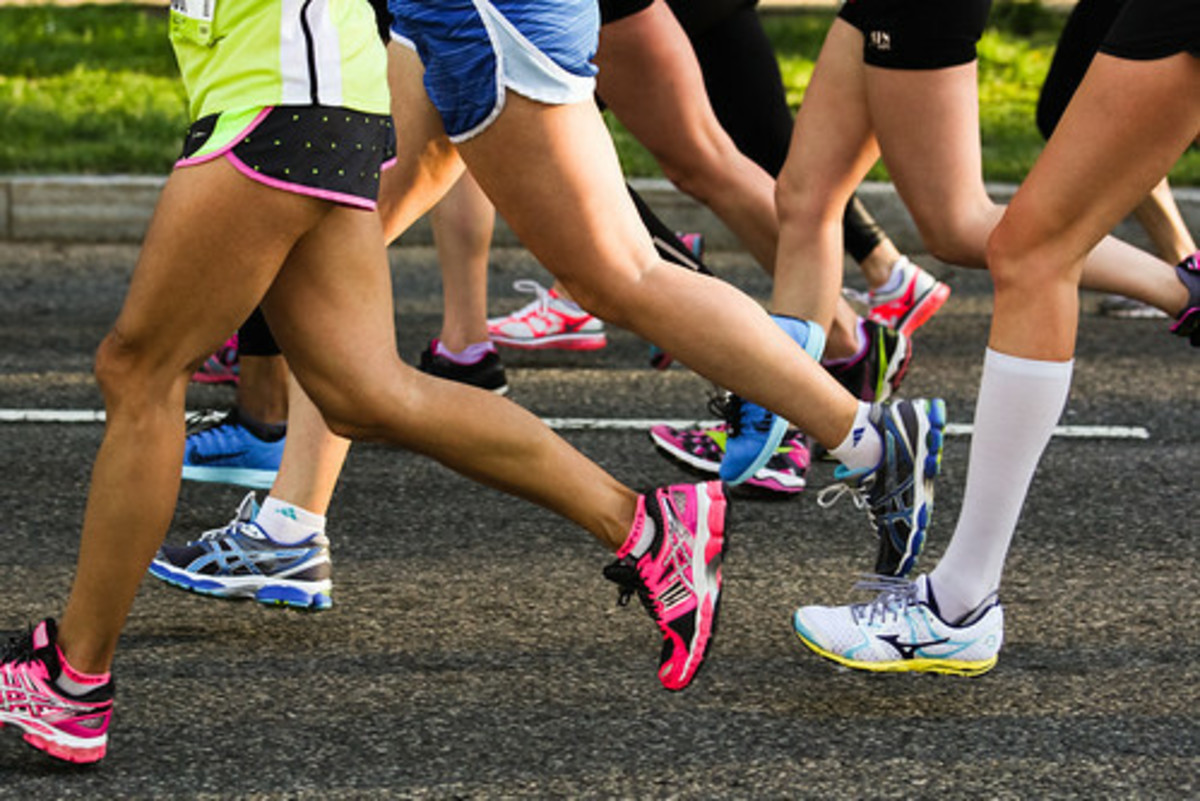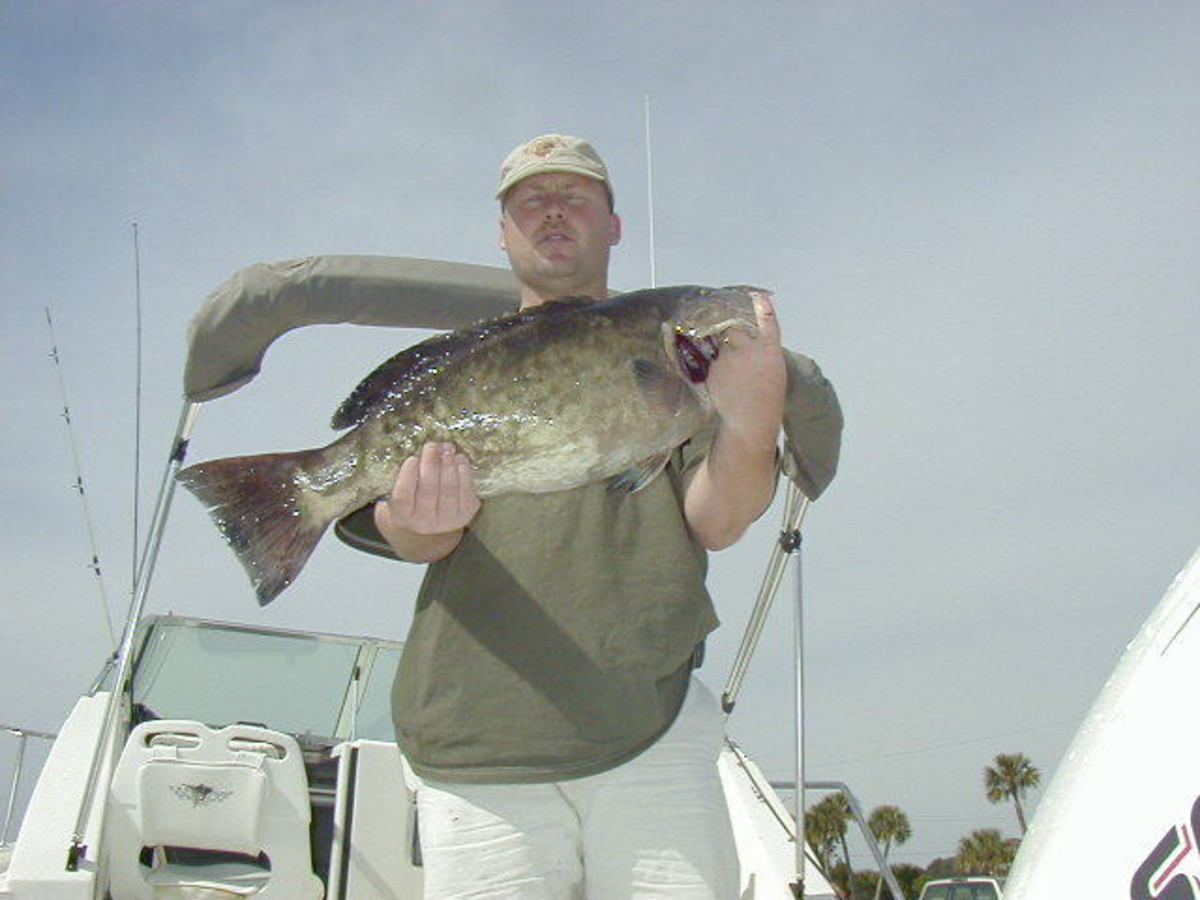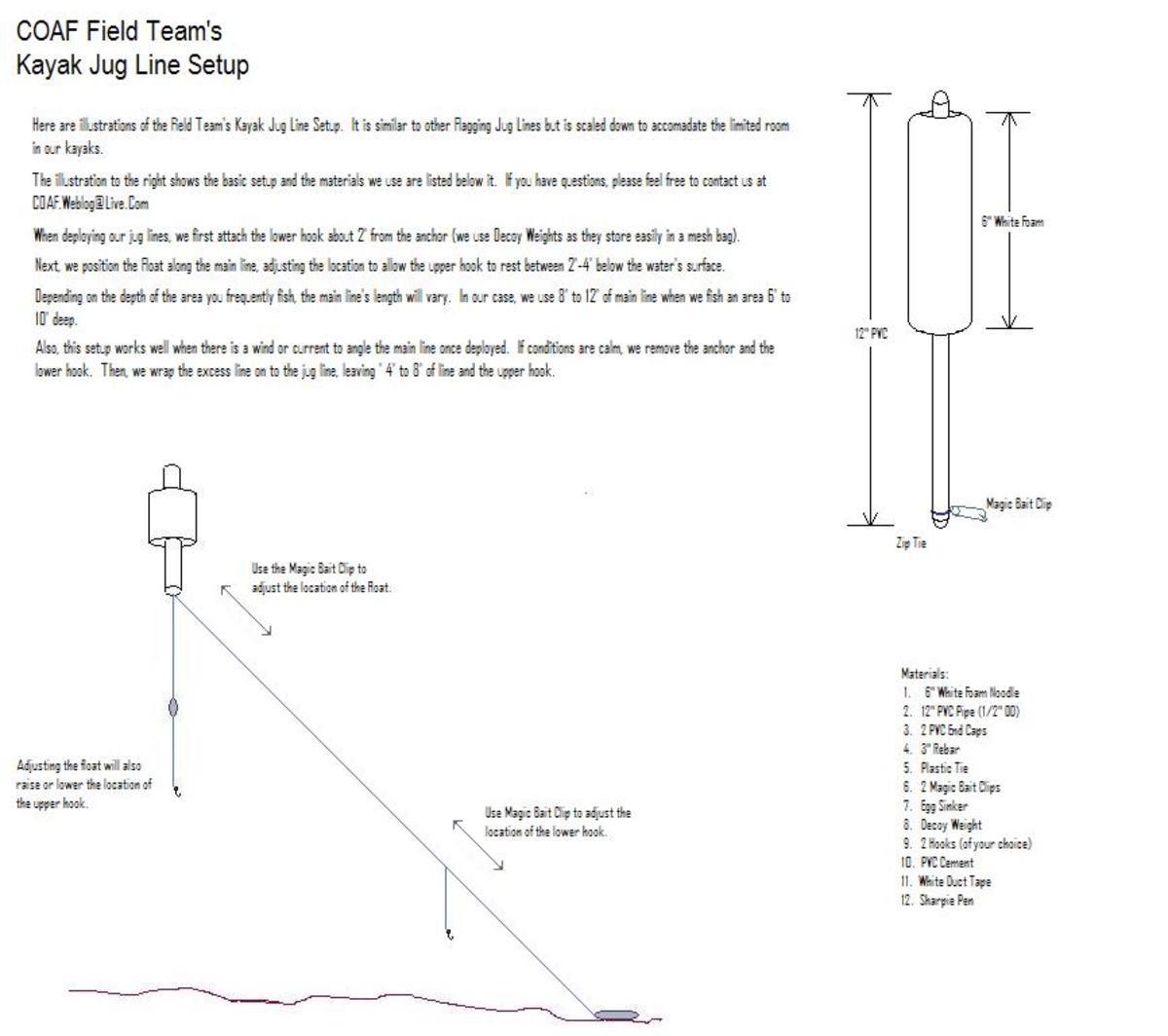The Boston Marathon
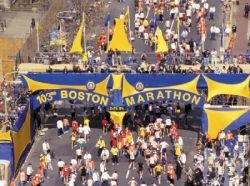
26 Miles, 385 Yards of History, Tradition and Celebration
The Boston marathon is the oldest annual marathon in North America. The first Boston marathon was held on April 19, 1897 with a total of 15 entrants over a 24.5 mile course, beginning a tradition that will resume exactly 115 years later with the 2012 edition of the Boston marathon on April 16, 2012. Here are some key points in the history of this great race and American institution.
From There to Here
John J. McDermott of New York won the first Boston marathon in a time of 2 hours, 55 minutes and 10 seconds. Since then, participation has skyrocketed from 18 official entrants in 1897 to 25,283 runners in the 2008 version. In 1927 the course was lengthened to the now official marathon distance of 26 miles, 385 yards.
The course record has gone from 2:55:10 to the 2:03:02, run by Kenya's Geofrey Mutai in 2011. In the years in between the Boston marathon has played host to a long line of great champions, scintillating races and has become a mass participation marathon as thousands of runners around the world aim to meet the qualifying standard to run in this great race.
The Course
The Boston marathon course begins in the village of Hopkinton, Mass. and continues through Ashland, Framingham, Natick, Wellesley, Newton and Brookline before finishing on Boylston Street in the Back Bay area of Boston, not far from Fenway Park. The course is deceptively easy at first, as the early miles are predominantly downhill, but as the runners enter the town of Newton, the course spikes upward in the famous Newton hills, where the winning surge of the race often begins.
The most famous of the Newton hills is Heartbreak Hill, which comes just after the 20 mile mark and was nicknamed by Boston Globe reporter Jerry Nason in 1936, in reference to the epic duel in the race that year between John A. Kelley and Ellison 'Tarzan' Brown, in which Brown pulled away from Kelley on the hill, "breaking Kelley's heart" as Nason put it.
As an aside, for those who have never run the Boston marathon, you might be surprised to find out that Heartbreak Hill is not really as big a hill as you might imagine. The hill is about 600m long and has a very moderate gradient. The part that makes it difficult is that it comes at roughly the 20 mile mark of the race and after a gruelling series of uphill sections known as the Newton Hills. Heartbreak Hill isn't so bad on it's own, but in the context of the course, it can be the final nail in the coffin for unwary runners who have been seduced into running too fast, too soon.
The most dramatic part of the course is the final turn from Hereford St. onto Boylston St. in Boston in the final stretch of the race. As the runners turn onto Boylston, they can finally see the previously obscured finish line about 600m away as a straight downhill run to the finish. With some of the most enthusiastic spectators in sport lining both sides of the street cheering at the top of their lungs, it is a truly inspiring sight and a just reward for the hundreds and thousands of miles of training required to get there.
Sneak Peek at the Boston Marathon Course

The Great Champions
Several runners have won the Boston marathon 3 or more times.
In the men's competition, Clarence Demar of the United States won a record 7 times, including his last at age 41. Bill Rodgers and Robert Cheruiyot have won it 4 times each and Canada's Gerard Cote, Finland's Eino Oksanen and Kenya's Cosmas Ndeti have been three time winners.
In the women's competition, Catherine Ndereba of Kenya has won it 4 times, while Uta Pippig, Rosa Mota and Fatuma Roba have won it 3 times each.
The Boston Marathon - Stories and Personalities
The are so many great stories and great personalities in the history of the Boston marathon, that to tell them all would be a massive undertaking. I've decided to tell my favourite Boston stories in a serial form, adding stories to this lens periodically. So keep checking back for new stories and features. The first addition will look at Kathrine Switzer - Making History.
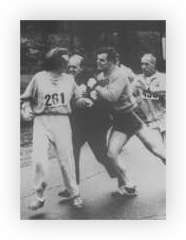
Kathrine Switzer - Making history
In 1967, Kathrine Switzer became the first woman to officially enter the Boston marathon. Prior to 1971, women weren't allowed to run in sanctioned marathons by the AAU ( Amateur Athletic Union, the governing body of track and field in the United States at the time ). Kathrine filled out her name on the entry form as K.V. Switzer, not to hide her identity, but because she always signed her name that way, following the example of some of her favourite writers.
Kathrine ran the race with a group of runners from Syracuse university which she attended, along with her coach, Arnie Briggs and her boyfriend, Tom Miller. Prior to the race, all went well, several of the runners recognized her as a woman and were very supportive. Four miles in to the race, a press bus carrying race director Jock Semple, among others passsed Kathrine's group and noticed that she was running. Semple jumped out of the bus and ran after her, grabbing Kathrine by the shoulder and yelling at her to get out of the race. Miller shoved Semple out of the way and Kathrine was able to run on and finish the race, completing it in about 4 hours and 20 minutes.
In 1972, women were officially allowed to compete in the Boston marathon. Switzer went on to run Boston 8 times and 1975 set a personal best of 2 hours, 51 minutes and won the 1974 New York City marathon. Kathrine and Semple went on to become great friends. Since then she has tirelessly promoted women's running and athletics and went on to found the Avon Global Running women's circuit of races for women in many different countries. Today she is a motivational writer and speaker.
You can read more about Kathrine at her website, Katherine Switzer.com
Up next, the story of John A. 'Old John' Kelley ...
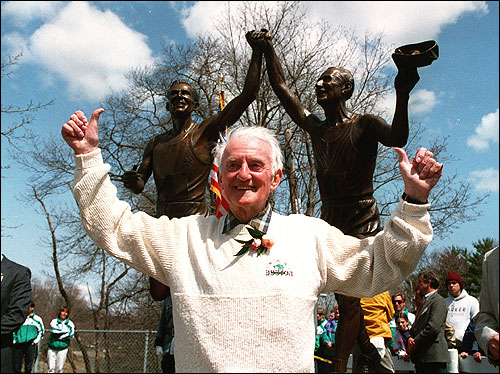
John A.Kelley - Young at Heart
John A. Kelley started 61 Boston marathons and finished 58 of them. Although he was unable to complete the course in his first two attempts, Kelley won the race in 1935 and 1945 and finished 2nd a record seven times, and finished in the top 10 eighteen times. Kelley was drawn into the sport when he was 12 years old as his father took him to see the finish of the Boston marathon. Kelley ran in the Olympic marathon in 1936, finishing 18th and again in 1948 at the age of 42 in which he finished 21st.
"People always ask me why I keep on running," he once said, "I keep running because I love it. To me there's nothing else like it in the world."
Kelley finished his last Boston marathon in 1992 at the age of 84 and served as the race's Grand Marshall from 1995 to 2004. For several years he delighted the crowds by singing the "Young at Heart" to the runners before the start of the Boston marathon.
In 1993, a statue of Kelley was erected at the base of Heartbreak Hill, depicting Kelly winning the 1935 Boston marathon, and holding hands with his then-current 84 year old self. Kelley in fact had a large part in the naming of Heartbreak Hill due to his epic battle with Tarzan Brown in the 1937 race where Brown passed Kelley on the hill before going on to win, " Breaking Kelley's heart, " as it was reported following the race. The hill where Brown made his move is now universally known as the famous Heartbreak Hill.
Kelley passed away in Cape Cod on October 6, 2004 at the age of 97, leaving behind a legacy of inspiration for the thousands of runners who have followed in his footsteps.
The next profile will be of John J. Kelley ( no relation ) who won the Boston marathon in 1957.

John J. Kelley - Hometown Hero
John J. Kelley, ( often referred to as 'John the Younger' to differentiate him from John A. Kelley profiled above ) was the only Boston Athletic Association runner to win the Boston marathon. He won in 1957 and set a course record of 2 hours, 20 minutes and 5 seconds, beating Victor Karvonen of Finland by nearly 4 minutes. The night before his win, he stayed at the house of John A. Kelley. The two would go on to become lifelong friends.
Kelley's win was the first by an American since the elder John's win in 1945. He also finished 2nd five times and in total ran 32 Bosoton marathons.
Kelley was a school teacher who had attended Boston University. He coached high school track adn cross country and one of his proteges, Amby Burfoot would go on to win the Boston marathon in 1968.
Kelley also competed in the 1956 and 1960 Olympics, finishing 21st and 19th respectively.
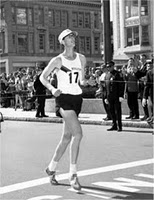
Amby Burfoot - Student Champion
Amby Burfoot was born in London, Connecticut, on August 19, 1946. Amby was a mere 21 years old and a student at Wesleyan University when he won the 1968 Boston marathon. Amby was coached in high school by John J. Kelley, who became his mentor and role model. Kelley was the most recent American winner at the time of Burfoot's Boston win.
Burfoot had trained up to 175 miles per week in the lead up to the 1968 Boston marathon and was in the shape of his life. He broke the race open with a surge at the 14 mile mark and pulled away from the pack with only Bill Clark, a 4:06 miler in pursuit. Burfoot, fearing Clark's finishing speed, pushed hard on the Newton hills hoping to get away, to no avail. Amby, "almost stopped on the spot," when he was unable to shake Clark on Heartbreak Hill, but Clark began to fall back soon after, a victim of muscle cramps. Burfoot went on to win in 2:22:17, thirty two seconds ahead of Clark. Later that same year, Burfoot ran 2:14:17 at the Fukuoka marathon in Japan, missing the American record by one second.
Burfoot's room mates at Wesleyan, in consecutive years were Jeff Galloway and Bill Rodgers. Galloway was a 1972 Olympian in the 10,000m meters and went on to become a key figure in the 1970s running revolution, eventually publishing several books and a very well known training plan for novice runners.
As for Bill Rodgers, well, he had some success at Boston as well, and is the subject of our next profile.
Putting One Foot in Front of the Other - Reflections on 30 Years of Running
If you like this lens, you might be interested in my new book, Putting One Foot in Front of the Other. I've been a competitive runner since I joined my first track club at the age of 11, and ran for my high school and university track teams. I've also run 14 marathons as an adult runner, including the Boston marathon in 2003 and 2007.
Here's a review of the book:
Putting One Foot in Front of the Other - Lessons Learned in 30 Years of Running is a compilation of time-tested advice for getting the most of your runing.
Inside you'll find tips on many of the "soft skills" of running that experienced runners learn over time, but that many "how-to" running books don't cover. The book includes chapters on such topics as how to build your confidence as a runner, how to recover properly from your workouts, race tactics, and how to avoid and treat common running injuries. You'll also find sections on the most common training tools that runners use such as how to design an interval workout, how to include hill training (one of the secrets of the top African runners) in your program, and the answer to the common question of, "How fast should I go on my daily runs?"
Whether you're a new, intermediate or advanced runner, Putting One Foot in Front of the Other offers tips that will help you get the most out of your running.
You can order the ebook or print versions from Lulu.com by clicking below.
Recommended Links
- Boston Athletic Association
Boston Athletic Asssociation website. - Boston Marathon
Official Boston Marathon website - Full Stride Running
Training tips for runners of all levels. - Keystroke Communcations
My freelance writing website.
Have you run the Boston marathon? Tell us your story!





